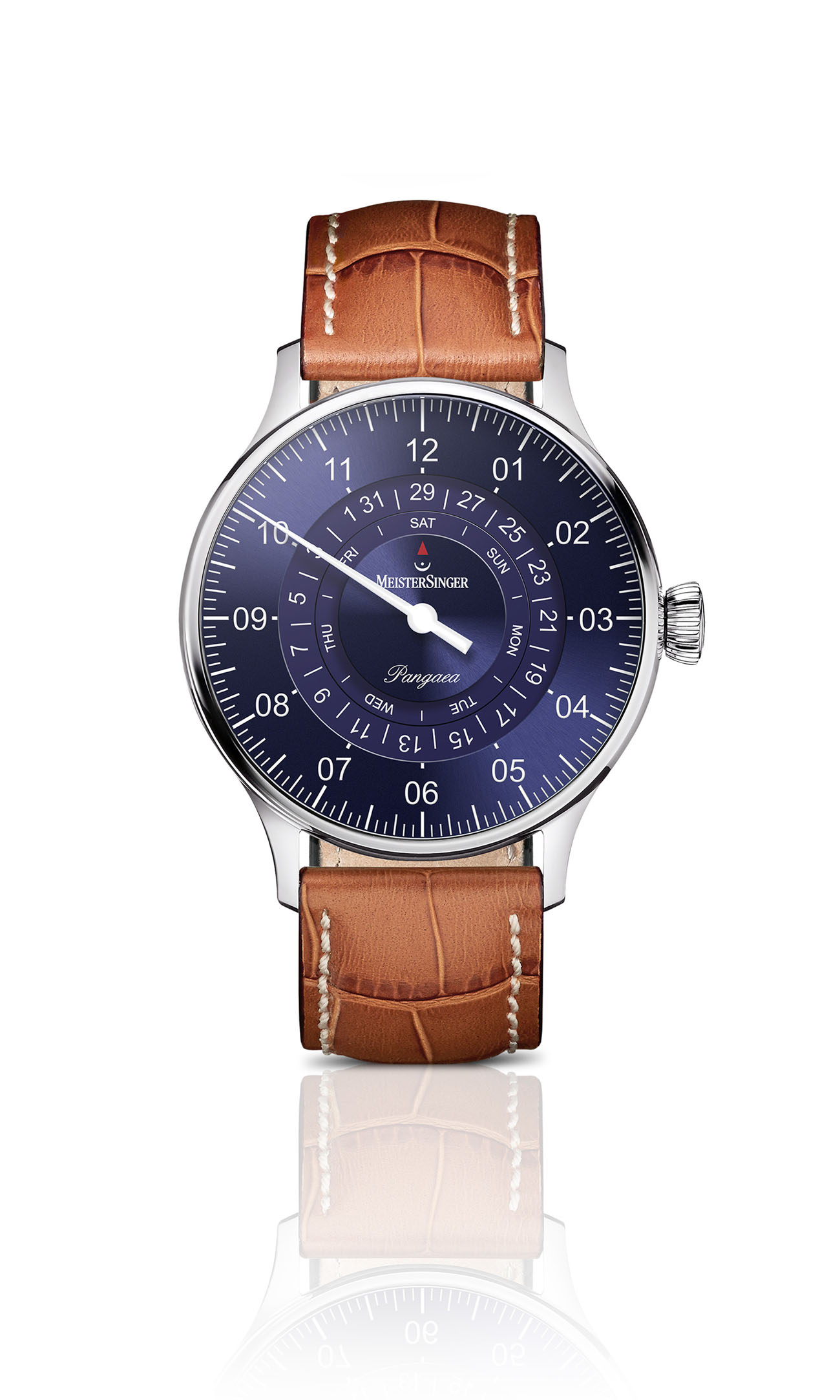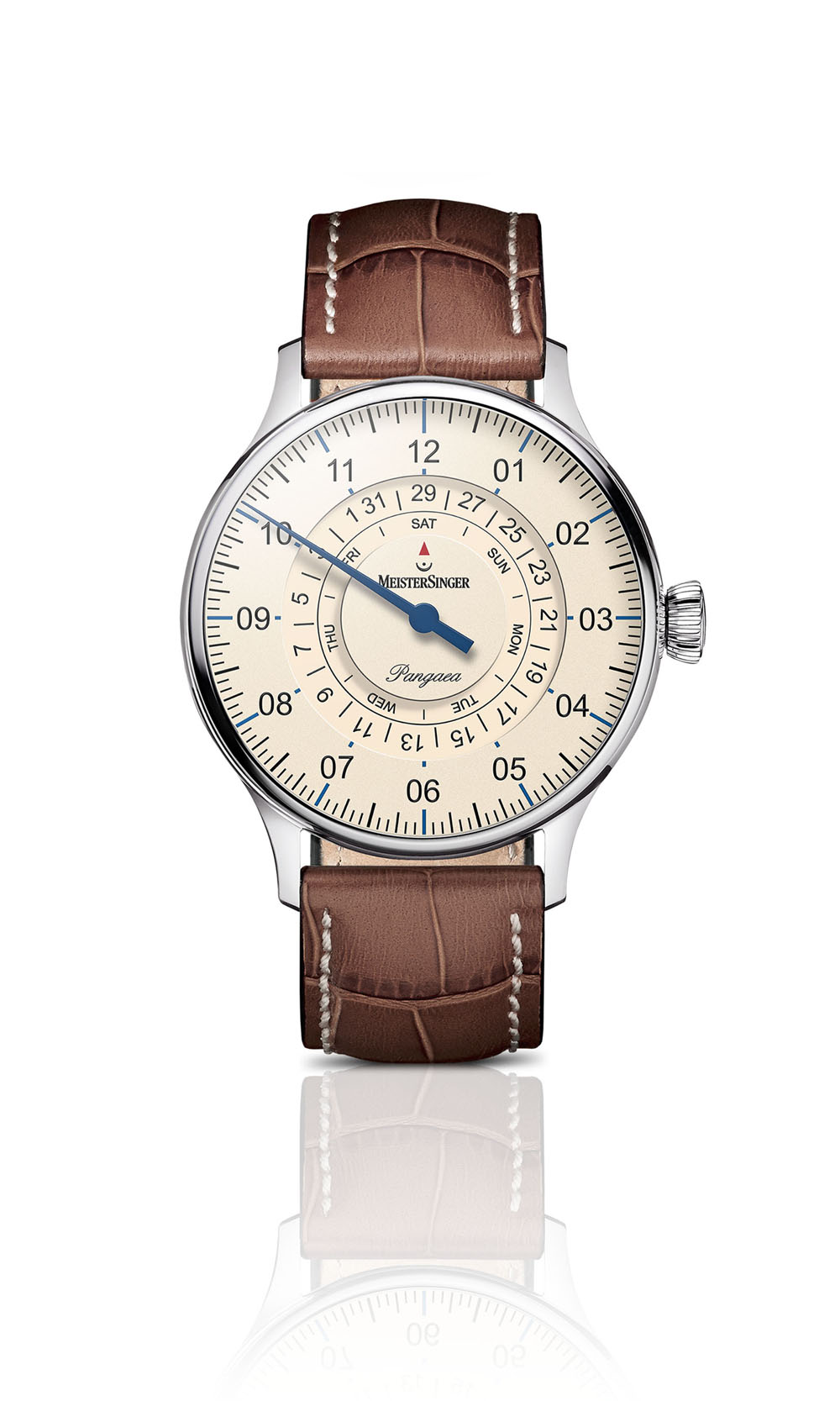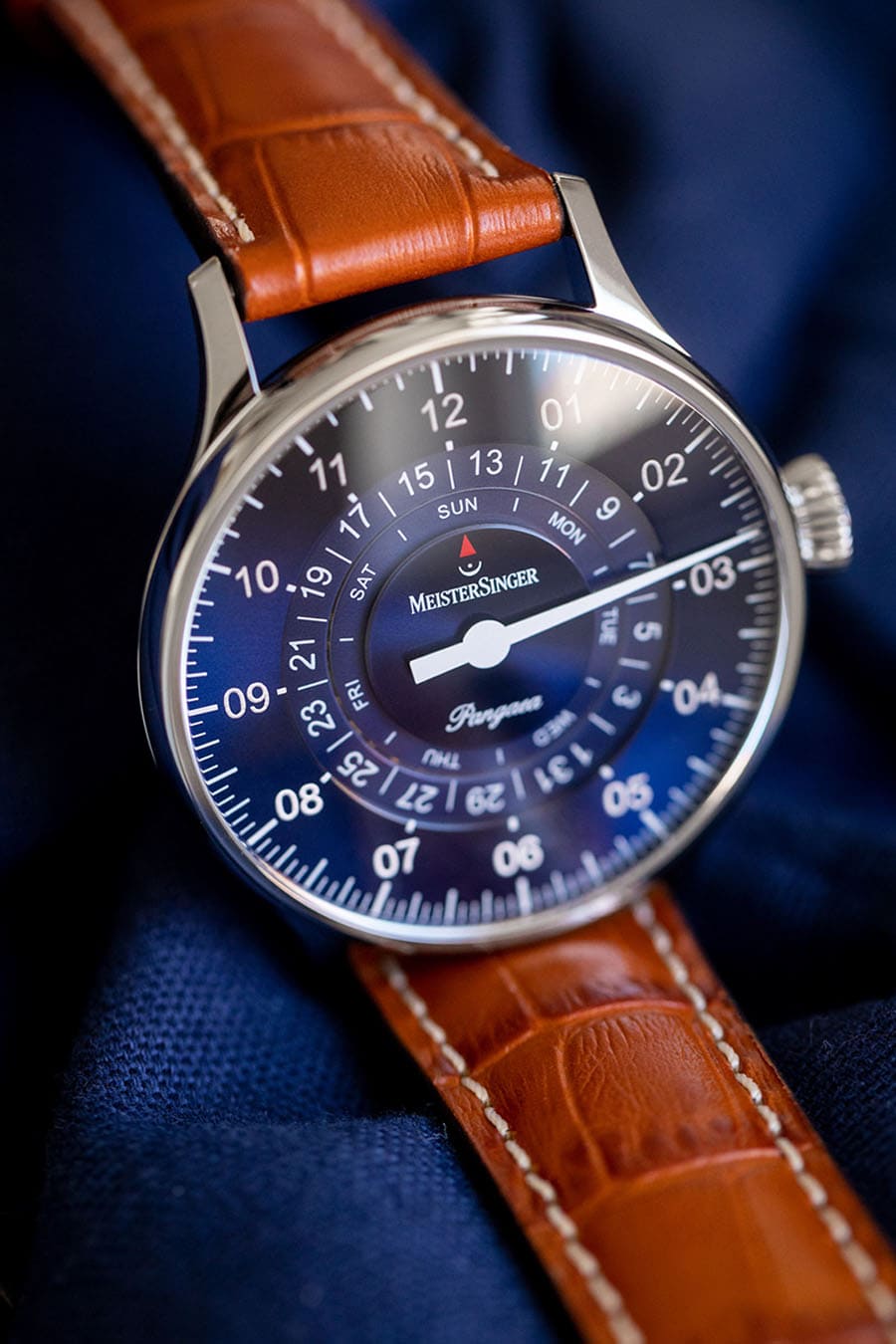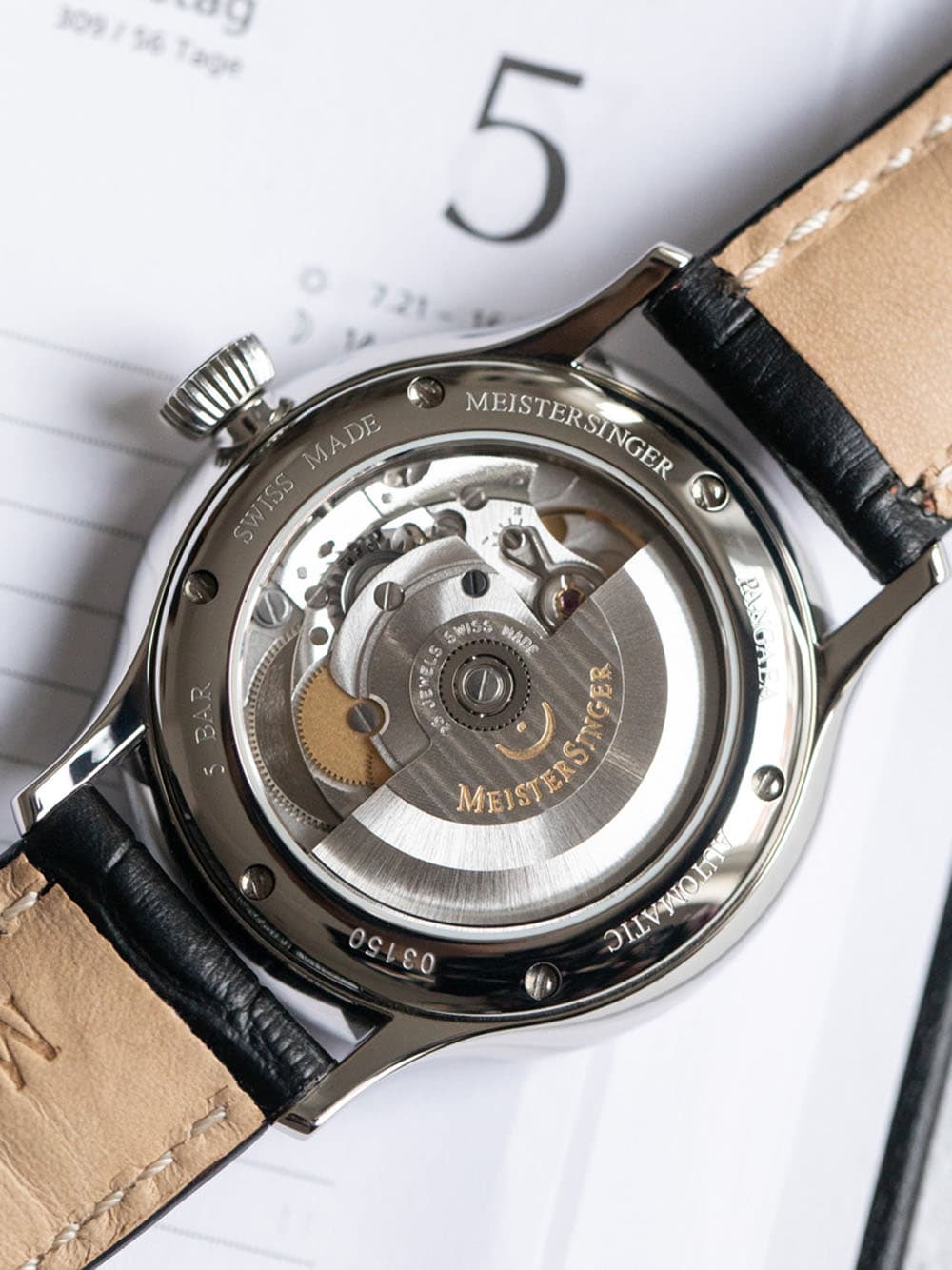MeisterSinger Pangaea Day Date – Lots of circles
Our Watch of the Week is the award-winning Pangaea Day Date – because it displays the date in a truly MeisterSinger way.
The most common and also the most practical additional display on a wristwatch is the date. Mostly we have at least a general idea of what time it is, but the date is something we are more likely to forget. That’s why wristwatches were designed at quite an early stage with an additional hand that pointed to the date on the outer edge of the dial. Finally, in the 1930s, the date window became a popular feature and from then on, the small aperture in the dial allowed the wearer to see the date ring rotating behind it, switching one step to the following date each day at midnight. Although an extra hand can cause confusion, the window solution presents a new problem for designers: Where should it be placed without disturbing the geometry of the watch? At 12 o’clock, practically at the top of the dial? At 3 o’clock, where the crown is already dominant in optical terms? And surely not at 9 o’clock, which is frequently covered by the sleeve when taking a quick glance? Some watchmakers have typically chosen 4 o’clock as the most discreet position. However, MeisterSinger places its date window, which is always round and not square, at 6 o’clock.
For more information, visit www.meistersinger.com
Proportion and symmetry
Things start to become rather complicated if the weekdays are also displayed in a second window. It makes sense, of course, to position the two windows next to each other to make it easier for the wearer to read: “Wednesday the 19th”. This constellation is usually found at, or rather instead of, the 3, which effectively disrupts any attempt at symmetrical design.
 With the Perigraph, Manfred Brassler developed a completely different type of date display that features an open date disk rotating visibly around the dial. The current date is always displayed at 12 o’clock. The Pangaea Day Date supplements this process by additionally displaying the weekday and is still slightly smaller and more elegant than the robust Perigraph. The date and weekday rings are open, well-balanced, and rotate neatly around the center of the Pangaea’s dial. At midnight, the two rings move one step further and are grouped below the 12 to show the current day and date. This form of display not only leaves the geometry of the dial undisturbed, it also embodies the principle of the analog watch, which not only shows one moment in time, but also an overview of the passing of time: Of that which has passed, and that which is yet to come.
With the Perigraph, Manfred Brassler developed a completely different type of date display that features an open date disk rotating visibly around the dial. The current date is always displayed at 12 o’clock. The Pangaea Day Date supplements this process by additionally displaying the weekday and is still slightly smaller and more elegant than the robust Perigraph. The date and weekday rings are open, well-balanced, and rotate neatly around the center of the Pangaea’s dial. At midnight, the two rings move one step further and are grouped below the 12 to show the current day and date. This form of display not only leaves the geometry of the dial undisturbed, it also embodies the principle of the analog watch, which not only shows one moment in time, but also an overview of the passing of time: Of that which has passed, and that which is yet to come.
For more information, visit www.meistersinger.com
| Model | Pangaea Day Date |
| Movement | ETA 2836-2 or Sellita SW220-1 (movements identical in construction)
Automatic 26 jewels 28800 semioscillations per h – 4 Hz Incablock antishock system |
| Case | Stainless steel with 6-screwed exhibition back
Diameter 40 mm Height 10,5 mm Domed sapphire glass |
| Water resistance | 5 bar |
| Power reserve | 38 h |
For more information, visit www.meistersinger.com
Awards:
- _ red dot design award 2013
- _ GOOD DESIGN award 2013
- _ German Design award 2014






